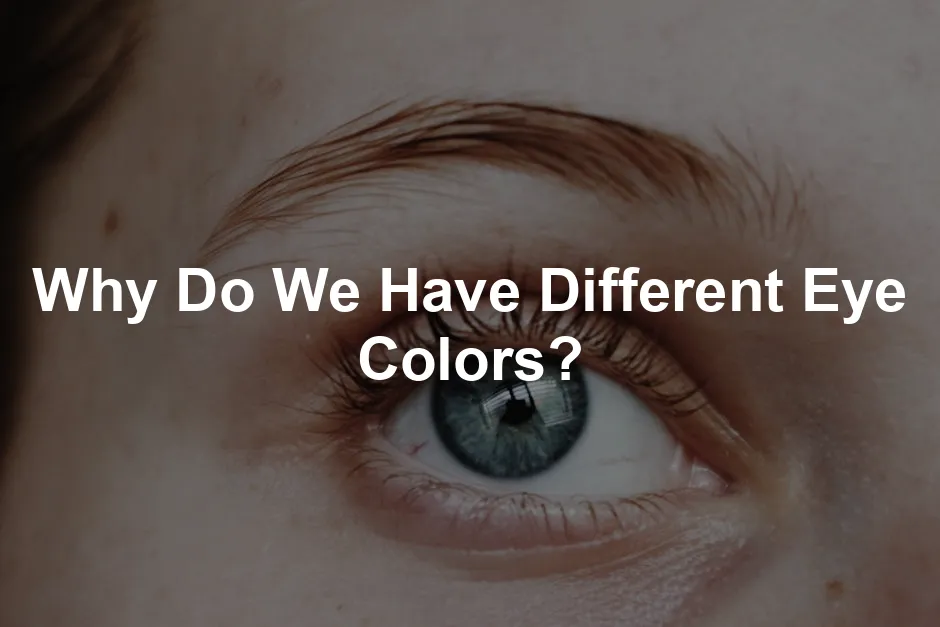
Why Do We Have Different Eye Colors?
Introduction
Have you ever gazed into someone’s eyes and wondered about their unique color? Eye color is one of the most noticeable traits we possess, and it reflects the beautiful diversity of humanity. It’s not just a matter of aesthetics; eye color is a fascinating mix of genetics and environmental influences.
Genetics plays a leading role in determining eye color. Our genes, inherited from our parents, dictate the amount and type of melanin produced in our irises. But wait, it’s not all about genes! Environmental factors, such as sunlight exposure, can also influence eye color over time.
In this article, we will uncover the reasons behind different eye colors. We’ll explore the science of melanin, the role genetics plays, and the complexities that make your eyes uniquely yours. So, grab your favorite beverage and let’s get into the colorful world of eye hues!
Understanding Eye Color
The Anatomy of the Eye
Let’s start with the basics: the eye’s anatomy. The iris is the star player when it comes to eye color. This colorful part surrounds the pupil and acts like a window shade, controlling how much light enters the eye. The iris is made up of several layers, but the ones that matter most for color are the anterior border and the stroma.
Within these layers, we find melanocytes—cells that produce melanin. Think of melanin as the paint in your eyes. The more melanin you have, the darker your eye color will be. Brown eyes? That’s a high melanin concentration at work! On the flip side, blue eyes result from a lack of melanin. Instead of blue pigment, the color arises from light scattering—similar to how the sky appears blue on a clear day.
This scattering effect is also why green and hazel eyes can appear to shift in color. The interplay between light and melanin creates a natural palette, making every pair of eyes distinct. Understanding this anatomy helps illuminate just how intricate and unique our eye colors truly are!
Melanocytes, therefore, are crucial for eye pigmentation. Their activity, regulated by genetics, determines whether you’ll flaunt deep brown eyes or strikingly blue ones. Isn’t it wild how something so small can make such a significant impact on your appearance?
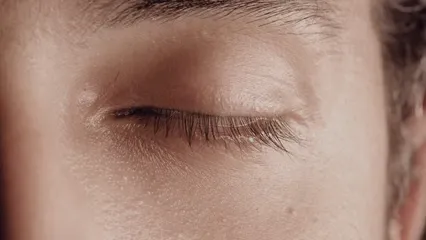
The Role of Melanin
Melanin is the superhero pigment that gives color to our skin, hair, and yes, our eyes! It’s like nature’s own paint, providing shades from deep brown to striking blue. This pigment plays a critical role in protecting our eyes. It absorbs harmful light, including some UV rays, helping to keep our precious peepers safe.
Now, let’s break it down a bit. There are two main types of melanin: eumelanin and pheomelanin.
- Eumelanin is the darker of the two. It gives us those rich, deep chocolate brown eyes. More eumelanin means darker eye colors, like black and brown. Think of it as the bouncer at the door of a club—keeping out the unwanted light!
- Pheomelanin is the lighter version, responsible for hues ranging from amber to green and hazel. If you’ve got green or hazel eyes, thank pheomelanin for those vibrant shades. It’s like the artist adding a splash of color to a monochrome canvas.
So, how do these two types work together? The amount and combination of eumelanin and pheomelanin determine your eye color. Brown eyes, with their hefty dose of eumelanin, are the most common. Blue eyes, on the other hand, arise from minimal melanin production, leading to a phenomenon called Tyndall scattering. This is the same optical trick that makes the sky look blue!
In essence, melanin is not just a pigment; it’s a fascinating player in the colorful game of eye hues. Understanding melanin helps us appreciate the wide spectrum of eye colors that make every pair of eyes uniquely beautiful!
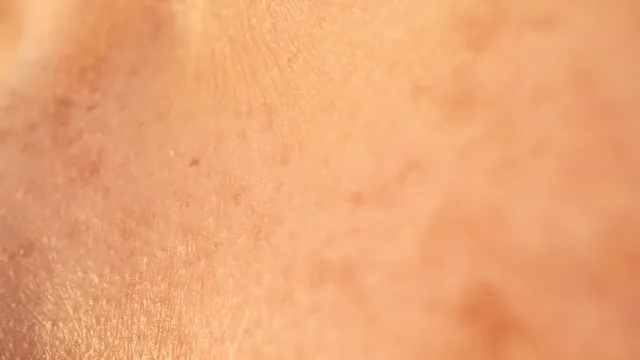
Eye Color Distribution and Rarity
Global Eye Color Statistics
When it comes to eye color, brown is the reigning champion. Approximately 70-79% of the global population sports brown eyes. This deep hue is attributed to high levels of melanin, which acts like a natural shield against harmful UV rays. Meanwhile, blue eyes are a rarity, found in only about 8-10% of the world’s population. Imagine walking into a room filled with people and spotting those striking blue eyes—they’re like rare gems!
But wait, there’s more! Green eyes, which are often considered the unicorn of eye colors, make up only about 2% of the population. Hazel eyes, a unique blend of colors, account for about 5%. Gray eyes? They’re even rarer, claiming a mere 3%. The statistics reveal a fascinating narrative about human diversity and genetics, showcasing how unique we all are.
So, why are brown eyes so common? One theory suggests that as humans migrated from regions with high sunlight exposure to areas with less, the need for protective melanin increased. In contrast, blue eyes emerged from a specific genetic mutation that occurred thousands of years ago. This mutation is believed to have originated from a single ancestor, making blue eyes a fascinating link to our evolutionary past.
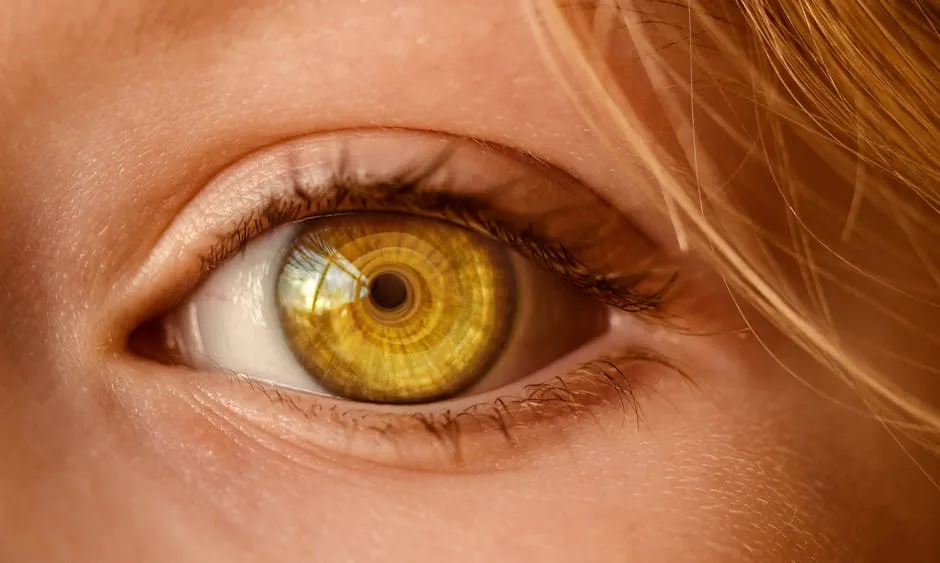
Historical Perspective
The story of eye color doesn’t just stop at statistics; it’s steeped in history and evolutionary biology. The earliest humans likely had brown eyes, as this trait provided better protection against the sun’s rays. As our ancestors spread across the globe, genetic variations began to emerge, influenced by local environments and migration patterns.
A pivotal moment in this tale is the mutation that led to blue eyes. Research suggests that this mutation occurred around 6,000 to 10,000 years ago in a region near the Black Sea. As some humans migrated north into cooler climates, lighter eye colors became advantageous. This shift not only minimized the risk of UV damage but also played a role in social dynamics within groups.
Geographical factors shaped eye color distribution significantly. For example, populations in Northern Europe are more likely to have lighter eye colors due to less sunlight and a corresponding need for vitamin D synthesis. In contrast, those from Africa and Asia typically possess darker eye colors, which help protect against intense sunlight. This fascinating interplay between genetics and environment highlights how much our physical traits can tell us about our ancestry.

Why Do Babies Often Start With Blue Eyes?
Have you ever noticed that many babies are born with blue eyes? This phenomenon is surprisingly common among infants, particularly those of Caucasian descent. Initially, babies have little to no melanin in their irises, leading to that adorable blue hue. As they grow, their eye color may change dramatically.
The production of melanin, the pigment responsible for eye color, ramps up as babies are exposed to light. By around six months of age, some babies’ eye colors darken. Genetics plays a critical role here. If either parent has darker eyes, the chances of the child transitioning to a darker eye color increase. However, if both parents have light-colored eyes, the chances remain higher for the baby to keep those captivating blue peepers.
Interestingly, this phenomenon isn’t limited to Caucasian babies; it can occur across various ethnicities. The initial blue color acts like a natural camouflage, aiding in social bonding. It’s all part of the wonderfully complex tapestry of human genetics. So, the next time you gaze into a baby’s eyes, remember that those blue hues may not stick around forever, but they sure are charming while they last!
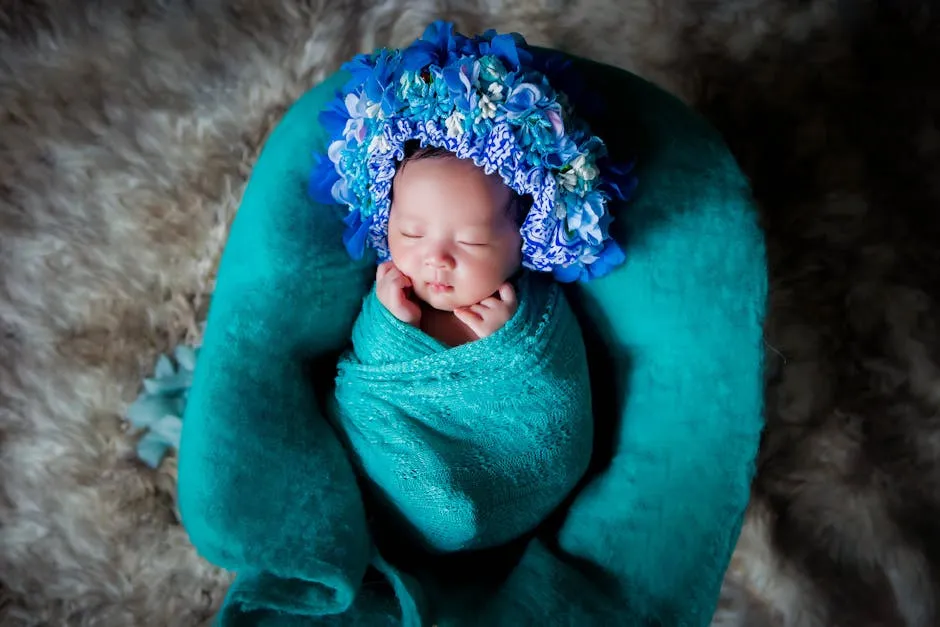
Other Factors Influencing Eye Color
Environmental Influences
Ever glanced at someone and thought their eye color changed? This phenomenon isn’t just your imagination! Lighting plays a sneaky role in altering how we perceive eye colors. Bright sunlight can make blue eyes sparkle like the ocean, while dim indoor lighting might cast a shadow, making them appear darker.
Your wardrobe choices can also impact this illusion. Wearing a bright blue shirt can make blue eyes pop, while earthy tones might bring out the golden flecks in hazel eyes. It’s like magic—one moment your eyes are a certain hue, and the next, they seem to shift shades!
But hold onto your hats; the physiological factors also come into play. Pupil size can affect how bright or dark your eyes look. When you’re excited or scared, your pupils dilate, letting in more light. This can enhance the vibrancy of lighter eye colors. Aging, too, can change eye color appearances. As we age, our eyes may lose some pigmentation, leading to a lighter look.
Injuries or trauma to the eye can cause shifts in color, adding another layer of complexity to this colorful subject. So, the next time you admire a pair of eyes, remember that what you see might just be a trick of light and circumstance!

Medical and Health Implications
Eye color isn’t just for show; it carries some medical significance too. Research suggests that people with lighter eye colors—like blue or green—may face increased risks for certain conditions. For instance, they might be more susceptible to age-related macular degeneration (AMD). This condition affects central vision and can lead to serious vision problems. It’s like being a superhero with a hidden weakness!
But wait, there’s more! Heterochromia, the condition where someone has two differently colored eyes, can be caused by genetics or environmental factors. It can be a quirky genetic trait passed down through generations. Alternatively, it can result from injuries or illnesses. Some people with this condition wear it like a badge of honor, showcasing their unique genetic lottery win.
Interestingly, eye color can also be a subtle indicator of health issues. Yellowing of the sclera (the white part of the eye) can hint at liver problems, while changes in pigmentation might signal other health concerns. So, while eye color may seem trivial, it can provide valuable insights into our overall health. Isn’t it fascinating how something so simple can carry such weight?
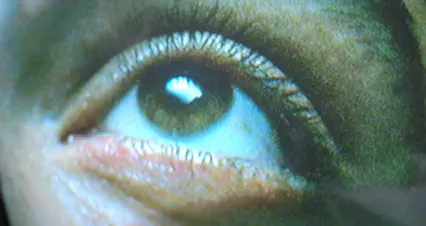
Artificial Eye Color Changes
Cosmetic Options
If you’re looking to switch things up, the world of artificial eye color changes is vast! Color contact lenses are the most popular option for changing eye color without any long-term commitment. You can easily transform your brown eyes into dazzling blue ones for a night out or a special occasion. It’s like giving your eyes a costume change!
However, before you rush to grab those funky lenses, a word of caution! Consulting with eye care professionals is crucial. Not all lenses are created equal, and some can be uncomfortable or even harmful if not fitted properly. Your eyes deserve the best care, and a quick chat with an expert can save you from potential drama down the line.
Plus, it’s essential to remember that colored contact lenses merely cover the existing color. They don’t replicate the depth and richness of natural eye color, which lies beneath the surface. So, while you can achieve a new look, it may not be the same as the genuine article. In the end, whether you choose to go au naturel or embrace a new hue, just remember to keep your eyes healthy and happy!
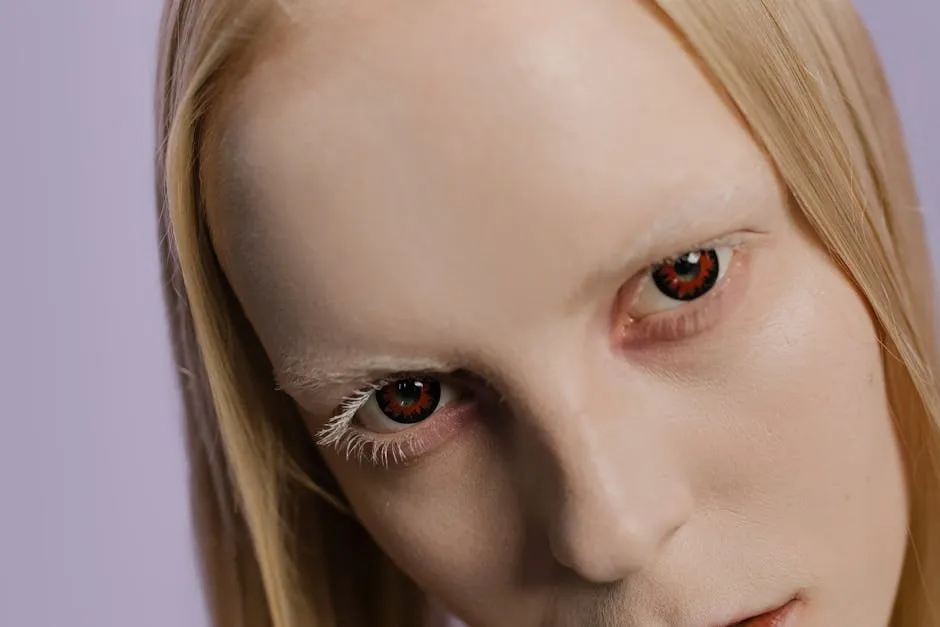
Conclusion
In wrapping up our colorful exploration of eye color, it’s clear that this trait is more than just a visual spectacle. We’ve journeyed through the science of melanin, the genetics behind our eye hues, and the fascinating statistics surrounding eye color distribution. Remember, brown eyes reign supreme globally, while blue and green hues add splashes of rarity to the mix.
The complexity of eye color reflects the intricate tapestry of human diversity. Each pair of eyes tells a unique story shaped by genetics, environment, and even a sprinkle of chance. From the protective benefits of melanin to the captivating variations that can arise in families, our eyes are a beautiful testament to our shared humanity.
So, the next time you gaze into someone’s eyes—whether they’re a deep chocolate brown or an enchanting blue—take a moment to appreciate the science and artistry behind those windows to the soul. Celebrate your unique traits and the wonderful genetic quirks that contribute to the vibrant diversity of life. After all, every eye color is a masterpiece, and you’re part of this colorful canvas!
FAQs
What determines my eye color?
Your eye color is primarily determined by genetics. The amount and type of melanin produced in your iris dictate if you have blue, green, or brown eyes. Melanin is the pigment responsible for coloring your skin, hair, and eyes. Generally, more melanin means darker eyes, while less results in lighter shades. Multiple genes interact in this process, making eye color a fascinating example of genetic inheritance.
Can eye color change over time?
Yes, eye color can change throughout your life, although the most significant changes typically occur in childhood. Many babies are born with blue or gray eyes, which can darken as melanin production increases. Environmental factors, such as exposure to light, can also influence how your eye color appears. Additionally, aging, health conditions, or even certain medications may lead to gradual changes in eye color.
Is there a health risk associated with certain eye colors?
Yes, there are some health implications tied to eye color. Individuals with lighter eye colors, such as blue or green, may experience a higher risk of conditions like age-related macular degeneration (AMD). This is due to lower melanin levels, which provide less protection against UV light. On the other hand, darker-eyed individuals benefit from increased melanin, which acts as a natural barrier against some harmful rays.
Why is brown the most common eye color?
Brown is the most common eye color worldwide, affecting about 70-79% of the population. This prevalence is due to high melanin levels, which provide better protection against UV radiation. As humans spread across the globe, those in sunnier regions adapted with darker eyes. In contrast, lighter eye colors, like blue and green, are less common and emerged from genetic mutations in certain populations.
What is heterochromia?
Heterochromia is a condition where a person has two different colored eyes or variations in color within the same eye. It can be caused by genetic factors, an injury, or certain medical conditions. Heterochromia is quite rare, affecting less than 1% of the population. The beauty of heterochromia adds another layer to our understanding of eye color diversity, showcasing how unique and varied human traits can be.
To keep your eyes healthy, consider investing in an Eye Care Kit that includes everything you need for proper eye maintenance. Because let’s face it, your eyes deserve a spa day too!
Please let us know what you think about our content by leaving a comment down below!
Thank you for reading till here 🙂
Understanding the science behind eye color can be fascinating. Learn more about why we have different eye colors and what determines them.
For those looking for a little extra help with their eye health, consider a daily supplement like Eye Health Vitamins. Your eyes will thank you for it!
All images from Pexels




